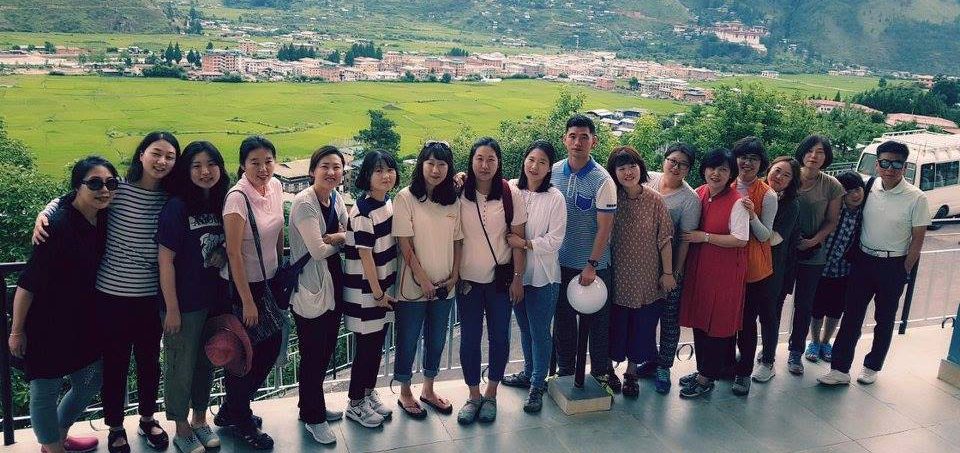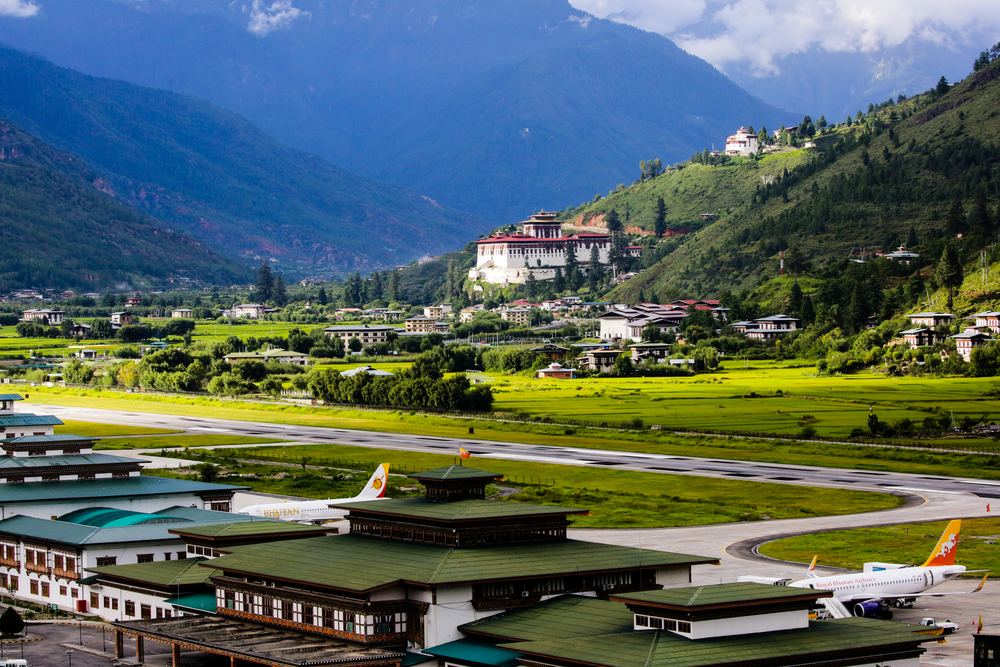
Bhutan is the last Mahayana Buddhist Kingdom, and the teachings of this school of Buddhism are a living faith among its people.
Spirituality exists even in the urban centers where the spinning of prayer wheels, the murmur of mantras and the glow of butter lamps in the houses are still important features of their everyday life.

Bhutan’s unique architecture is one of the most striking physical features; the color of house and buildings is a distinct source of aesthetic pleasure. Bamboo, ornaments of gold and silver and highly developed weaving kills represent an advanced art form. Various cultural trips into Bhutan introduce visitors to the unique aspects of Bhutanese culture, including sacred masked dance festivals and pilgrimage sites.
In this wellness tour our tourist will gain spiritualty, calmness, experience the Bhutanese culture, learn about why Bhutanese people are happy people, visit remote farmhouse and take part in the activities also.
There are many extra activities in this specially designed program which the normal tours doesn’t have.
ITINERARY OVERVIEW
· Altitude: 2,320 m
· Distance: 54 km
· Estimate driving time: 1 hr 30 minutes’ drive
After you arrive in the Kingdom of Bhutan, you will be received at the Paro International Airport by the representative of Yelha Bhutan Tours and travel’s guide and driver who will be your guide throughout your tour.
You directly travel to Thimphu, the capital town of Bhutan.
The road runs down through the Paro valley, to Chuzom (Confluence) at the entrance to the valley, where the Paro and Thimphu rivers meet. The road passes along a narrow valley with high, rocky cliffs on the left, and then the valley opens out into farmland on the approach to Thimphu.
On arrival at Thimphu, check into your hotel and after a refreshment or lunch visit the following:
Dinner and overnight at a hotel in Thimphu.
After breakfast visit the following:
Today you will all wear the beautiful Traditional Bhutanese dress and go for sightseeing ( men need to buy/or bring long socks) Bhutanese dress are one of the most beautiful dress and you would looks great the photograph in traditional custumes.
In the evening stroll through Thimphu downtown.
Overnight at a hotel in Thimphu.
Day 03: Thimphu – Punakha
After breakfast, drive to Punakha via the Dochula pass. An hour’s drive from Thimphu will take you to this pass (3140 m) where one can have a superb view of the Eastern Himalayas on a clear day with a powerful binocular telescope.
Visit the beautiful 108 chortens built on the hill by Her Majesty Ashi Dorji Wangmo for the security and wellbeing of His Majesty the King of Bhutan. Also visit Druk Wangyel Temple which was built to honor His Majesty, the fourth king Jigme Singye Wangchuck. The past and future appear to merge in the details of the temple that tells the story of a supreme warrior figure whose vision pierces the distance future.
Visit the caves at dochula mountain pass which is around 7 minute’s walk from the road. We can spend sometimes meditating in the beautifully located site.
After tea and toilet break we will drive towards Punakha valley and have our Lunch at Punakha.
After lunch walk through the Metshina Village and take a 20-minute walk through the paddy fields to the Devine Madman’s Monastery-Chhimi Lhakhang, famously known for its fertility shrine, where couples unable to conceive come here for blessing.
Our resort will be a beautiful farm house located in the beautiful village.
You will love the experience of the village home stay.The host will cook you special Bhutanese meals.
Early morning, you can either milk the cows or pluck your own vegetbles or fruits for the breakfast.
You can also learn about Bhutan cooking via the host of the farm house who is a very experienced cook.,
After breakfast we will drive to Upper punakha and then start our short hike to Khamsum Yuelley temple. Khamsum Yulley Namgyal temple stands out on a beautiful ridge above the Punakha valley. Her Majesty built the Queen Mother, Ashi Tshering Yangdon Wangchuck it.
It took nine years to build, and Holy Scriptures rather than engineering manuals were consulted to construct this 4-storey temple. It is a fine example of Bhutanese architecture and artistic traditions. This temple has been dedicated for the wellbeing of the kingdom, its people and all sentient beings. It is a 15-20 mins hike from the suspension bridge. The Chorten would take a one-hour hike to approach. It offers a beautiful view of the Punakha Valley.
We will be having a picnic lunch at the side of the river or opposite to Punakha Dzong.
Later we will visit the beautiful punakha Dzong which is located between punakha Pho (male river) chhu and female river (mo chhu )
After visiting the temple we will drive back to our farm house and learn some art like drying of clothes, cooking Bhutanese dished ‘especially the tasty chilli/ema datshi, potato/kewa datshi and other dishes.
You can join in some farming activities and traditional games also. The host will tell you the activates they have in which you can participate.
In the evening you will join in cooking the dinner also and have a nice traditional stone herbal bath which is good for the bones, muscles and blood circulations.
Over Night you can have a relaxing time with a bon fire and sing Bhutanese songs with the host and tour guides.
After breakfast at Punakha and we will have a leisure drive towards Paro valley. We will stop on way at Thimphu. After reaching Paro we will visit the following, if time permits:
After breakfast, drive for about 20 minutes to the base camp of Taktsang Monastery and hike up to Taktsang Monastery, also known as ‘Tiger’s Nest’.
The climb up to the viewpoint will take around 1 ½ hours and from there you will enjoy a spectacular view of the monastery clinging to the side of the cliff.
Stop for refreshment at the View Point Cafeteria, then walk further up to the monastery which will take about 1 hour. It is said that in the 8th century Guru Rinpoche flew on the back of a tigress from eastern Bhutan to this place and meditated in a cave here for 3 months. The principal Lhakhang (monastery) of the present monastic complex dates from 1692.
Taktsang was damaged severely by fire in 1998 but has now been fully restored to its former glory. After visiting the monastery, walk back down to the road on the way stop for lunch at the view point cafeteria and then walk further down to the road point. Then drive back to hotel.
After Taktsang you can visit the town and relax in a café. There are lots of café places around the town.
Overnight at a Paro resort.
In the morning, tour guide will escort you to the airport for your onward destinations. The airport is around 20 minute drive from your resort.